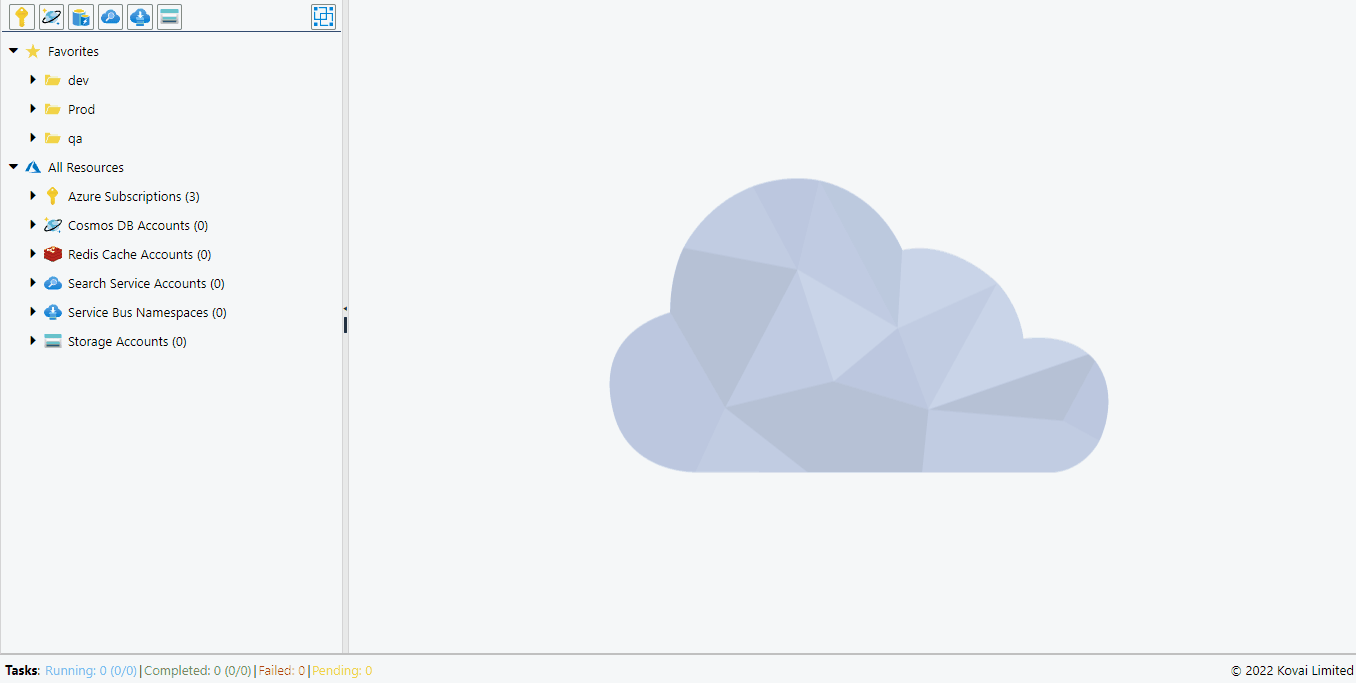- Print
- DarkLight
- PDF
Introduction
Service Bus is a messaging service provided by Azure to interconnect applications and services running within a cloud or on-premises solution. It is therefore a component available in any cloud architecture built with Azure.
Cerebrata supports the following operations on the Service Bus Namespace.
View Properties
Through Cerebrata, the users can view the basic properties of Namespace like Resource Id, Resource Group, Location, Subscription Name, Status, Provisioning State, Pricing Tier and Endpoint.
Properties of Service Bus Namespace can be accessed in Cerebrata only if the namespace is associated via Subscription Connection.
The below illustration shows viewing the properties of a Namespace.
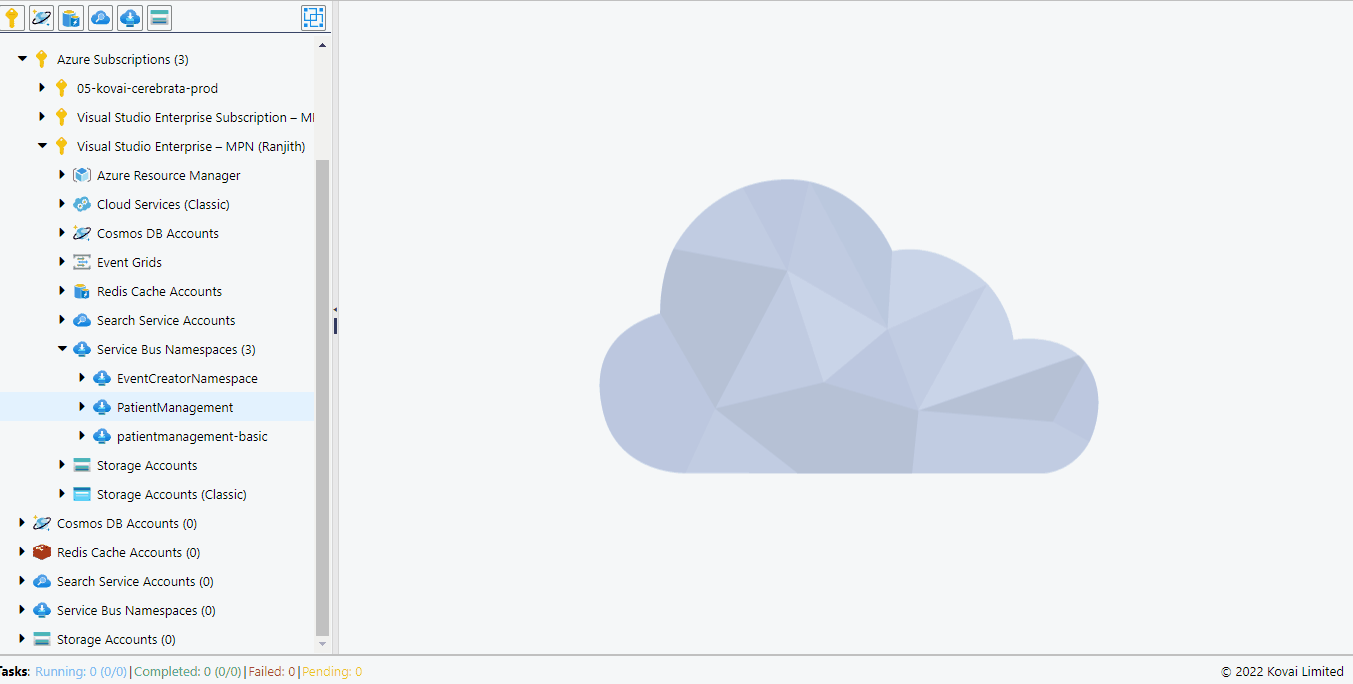
View in Portal
In certain cases there may be a need to view the metrices of Namespace like Incoming Requests, Successful Requests, Incoming Messages, Outgoing Messages and many more. To do this, the user has to navigate to the required Namespace in Azure portal through web browser. Cerebrata reduces this overhead by allowing us to view the Namespace in Azure portal through Cerebrata itself.
Open in Portal can be accessed in Cerebrata only if the namespace is associated via Subscription Connection.
The below illustration shows viewing the Namespace in Azure portal through Cerebrata.
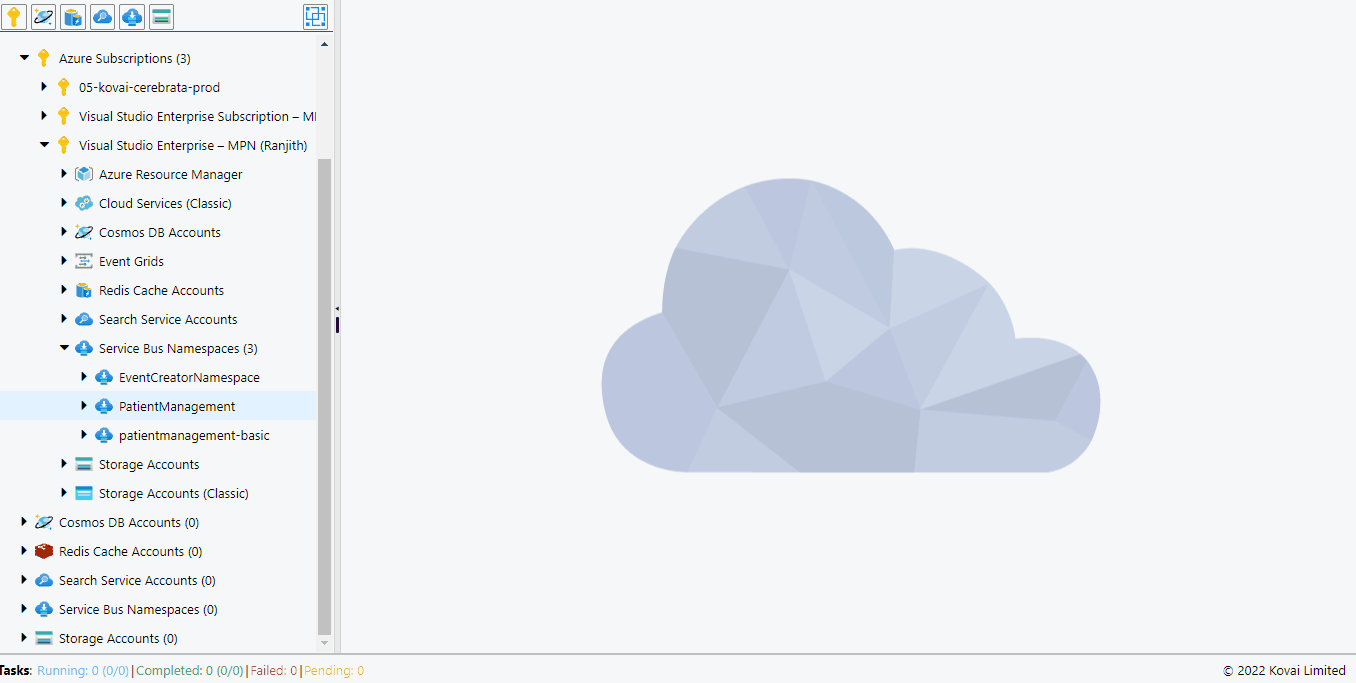
Manage Tags
Tags can be defined on Service Bus Namespaces for easy identification and management of resources. The tags can be created, modified and deleted using Cerebrata.
Tags can be managed through Cerebrata only if the namespace is associated via Subscription Connection.
The below illustration shows management of Namespace tags through Cerebrata
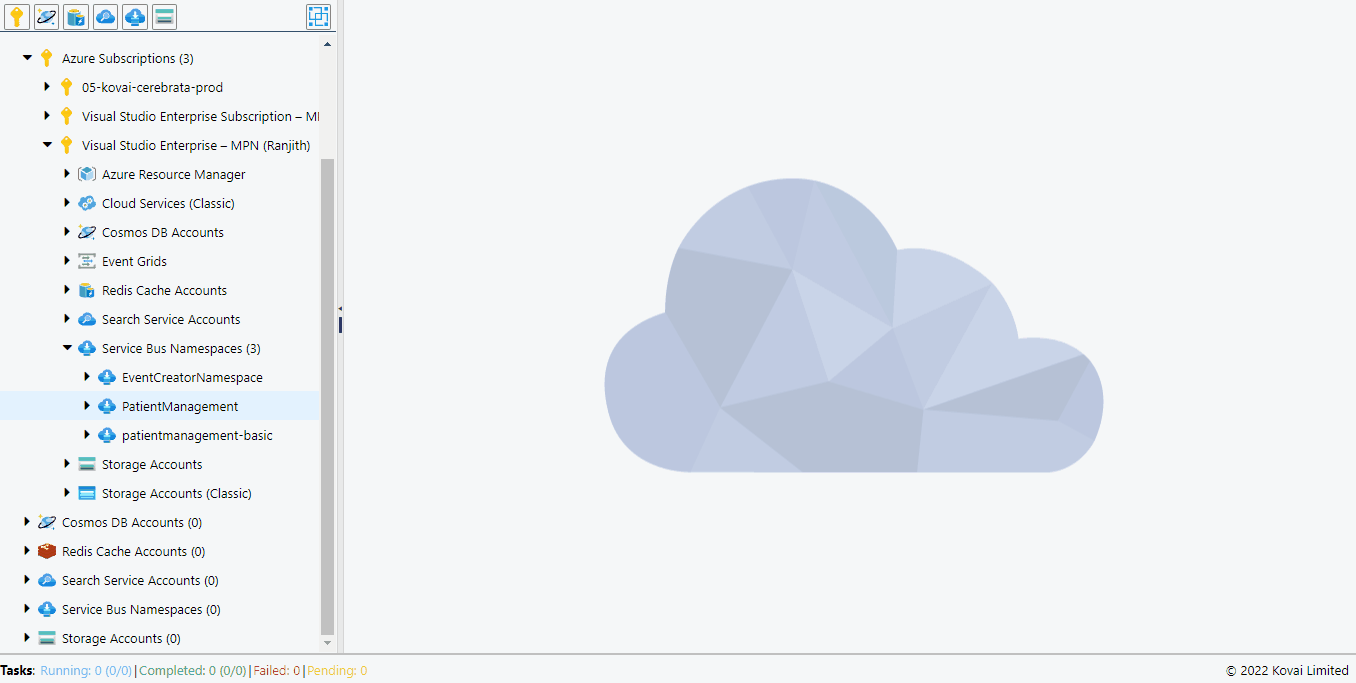
Management Locks
The resources in Azure may be a part of a vital architecture which must not be modified at any cost. In such cases, management locks can be created top prevent accidental deletion and modification of the resource. Cerebrata allows us to create the following
- Read-only lock: Allows a user to perform only ready. Delete and Update access is denied
- Delete lock: Allows a user to read and modify a resource. Delete access is denied
Locks can be managed through Cerebrata only if the namespace is associated via Subscription Connection.
The below illustration shows management of Namespace management locks through Cerebrata
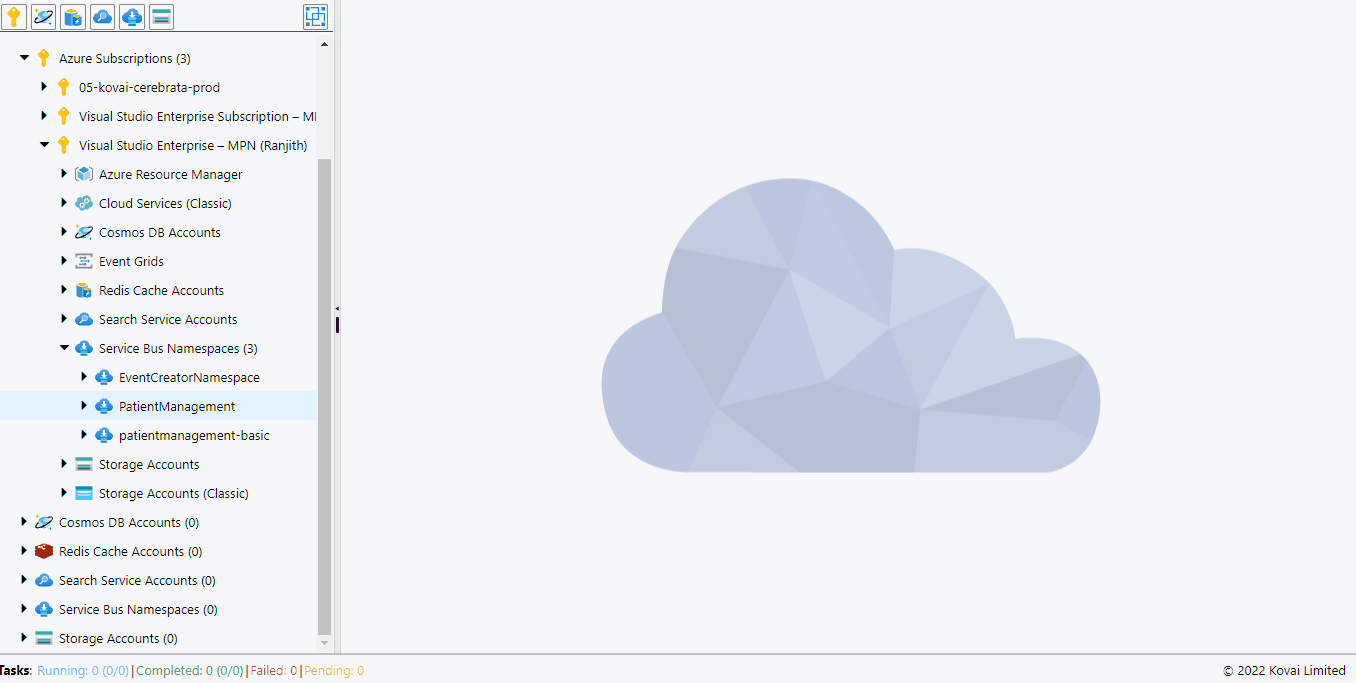
Shared Access Policies
Namespaces can be connected to custom code and applications through the keys or connection string. Cerebrata allows the users to view, regenerate and delete the access keys.
Shared Access Policies can be managed through Cerebrata only if the namespace is associated via Subscription Connection.
The below illustration shows management of Shared Access Policies through Cerebrata
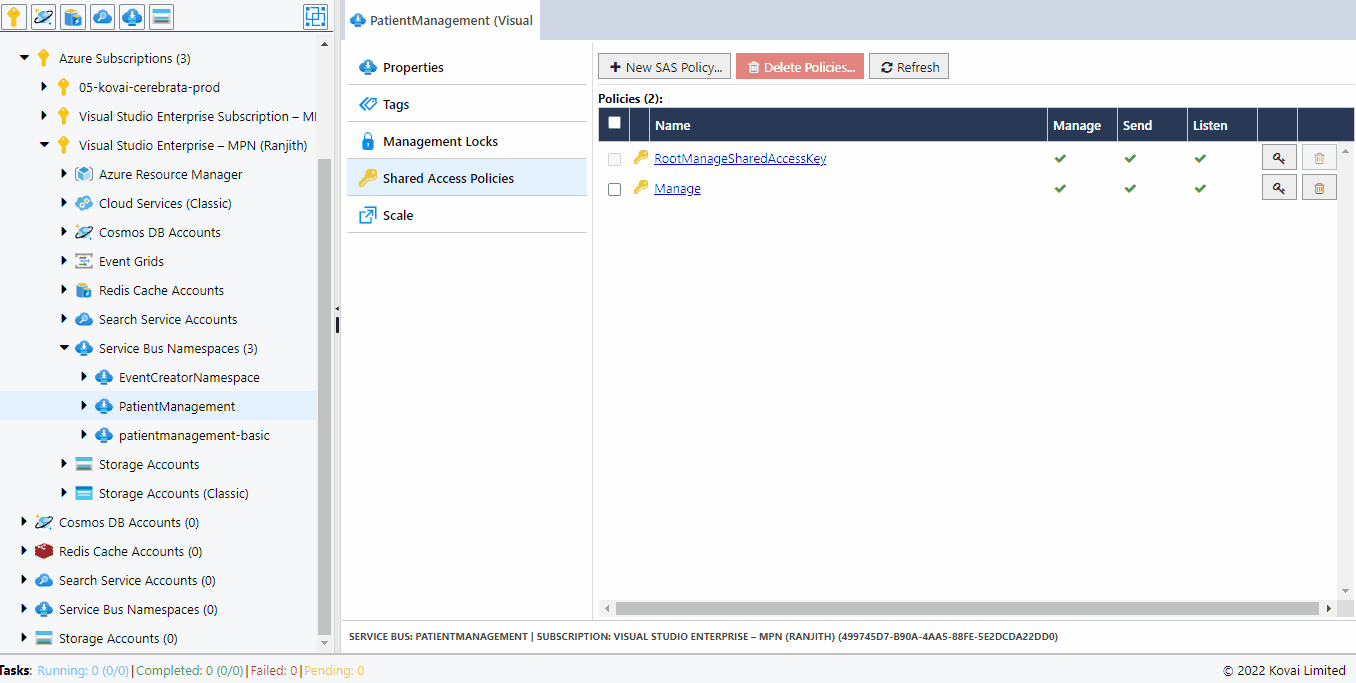
Scale
Service Bus Namespaces are available in three pricing Tiers. They are Basic, Standard and Premium respectively. Cerebrata allows the users to scale up a namespace from Basic to Standard Tier and scale down a namespace from Standard to Basic Tier respectively.
Scaling of Namespace can be done through Cerebrata only if the namespace is associated via Subscription Connection.
The below illustration shows scaling of Namespaces through Cerebrata
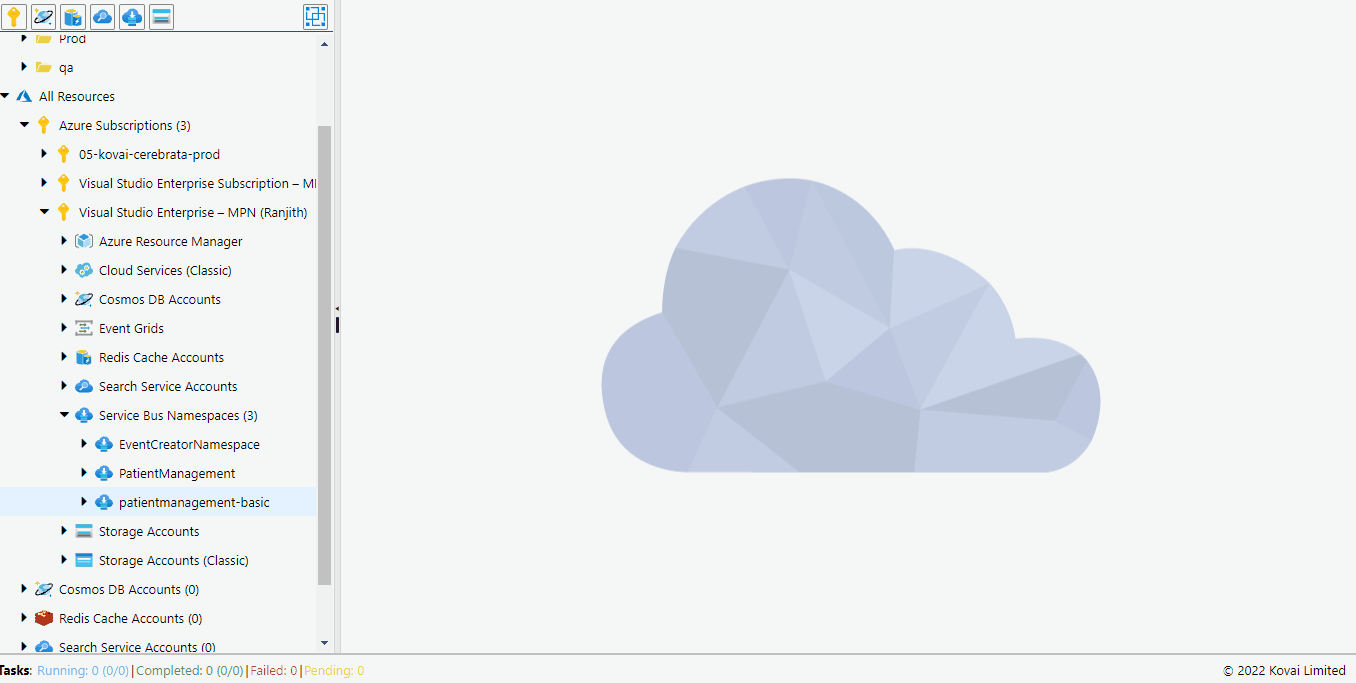
Add namespace through connection string
Service Bus Namespaces can be managed through Cerebrata even without direct access to it. The required Namespace can be managed through the access keys or connection string.
The below illustration shows association of Namespaces through connection string.
